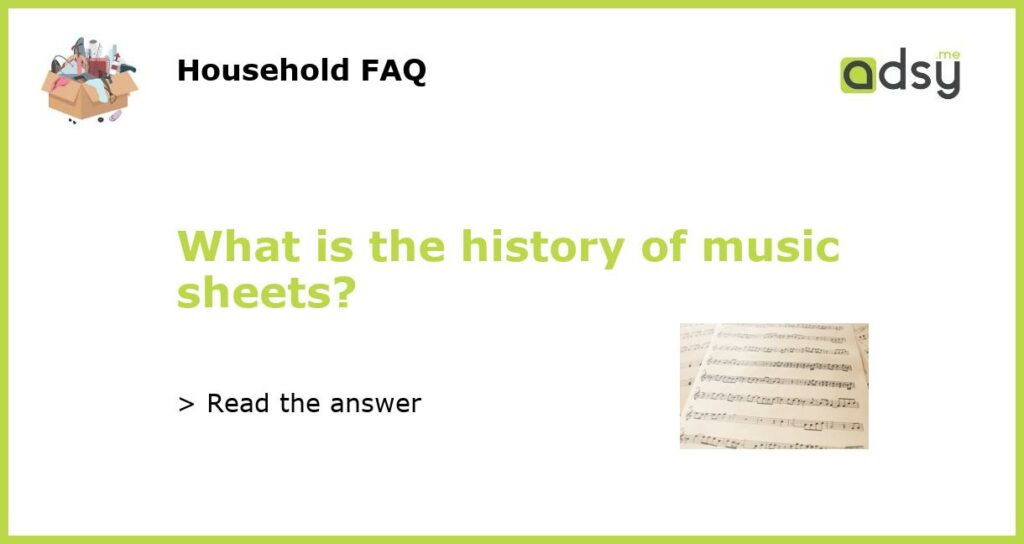The origin of music notation and sheet music
The earliest form of written music dates back to ancient Greece, where musicians used a system of musical notation to notate melodies. However, it wasn’t until the Middle Ages that music notation began to resemble the modern system we use today. During this time, composers and scribes developed a system of neumes, which indicated the direction of the melody, and eventually evolved into staff notation. By the Renaissance, composers were creating intricate and complex pieces of polyphonic music that demanded a highly developed system of notation.
The impact of printing technology on music sheets
The invention of the printing press in the 15th century revolutionized the way in which music was disseminated. Printed music allowed for widespread distribution and access to a larger audience than ever before. The first printed music appeared in the late 16th century, and by the 17th century music publishers were producing large quantities of sheet music for sale. The popularity of sheet music continued to grow during the 18th and 19th centuries, alongside the rise of the piano and the emergence of a middle class with disposable income for leisure activities.
Sheet music in popular culture
Sheet music played an important role in the popular culture of the 19th and early 20th centuries. It served as the primary means of disseminating popular songs, including vaudeville and minstrel show tunes. The rise of Tin Pan Alley in the late 19th and early 20th centuries further popularized sheet music, as publishers churned out songs in a factory-like setting. The advent of radio and phonograph recordings in the early 20th century eventually led to the decline of sheet music sales, as people began to listen to music rather than play it themselves.
Modern-day sheet music and digital technology
The decline of sheet music sales in the mid-20th century was partially offset by the growth of music education in schools. Sheet music remained an essential component of music education, allowing students to practice and perform a wide range of musical styles. Today, sheet music remains an important part of the music industry, although sales have largely shifted to digital formats. Musicians can purchase digital sheet music online from platforms like Musicnotes or Sheet Music Plus, and apps like Notetracks allow musicians to collaborate on and annotate digital sheet music. Despite the shift to digital, sheet music remains an important tool for musicians to read and perform music.
The future of sheet music
The future of sheet music is likely to continue to evolve alongside technological advances. Apps like ScanScore and Noteflight use artificial intelligence to transcribe handwritten or printed music into digital notation, making it easier for musicians to access and work with sheet music. As technology continues to advance, it’s likely that sheet music will become even more accessible and user-friendly, allowing musicians of all levels to read and create music with greater ease.






